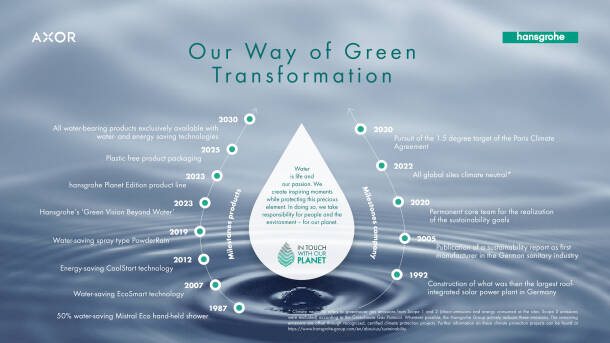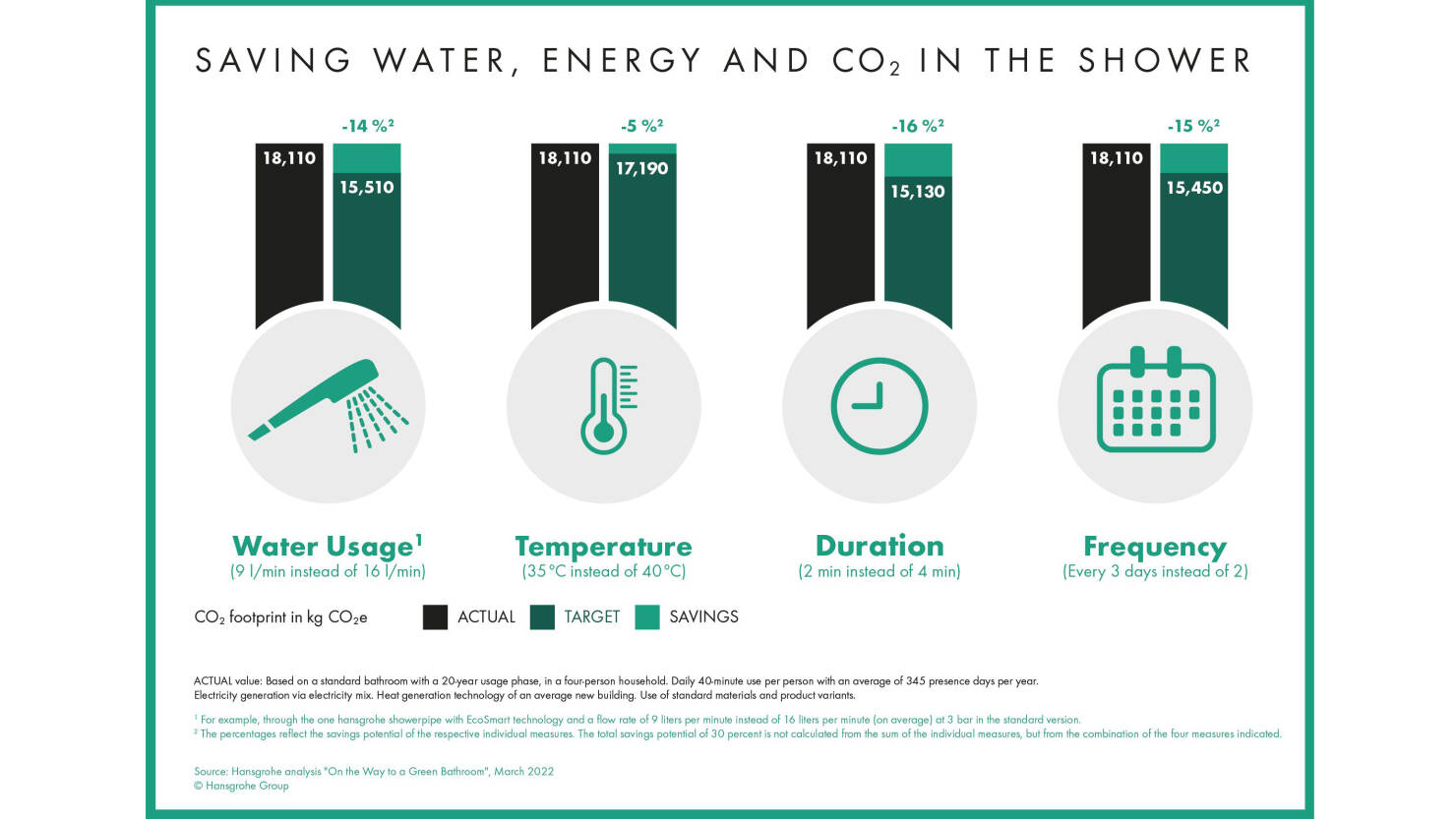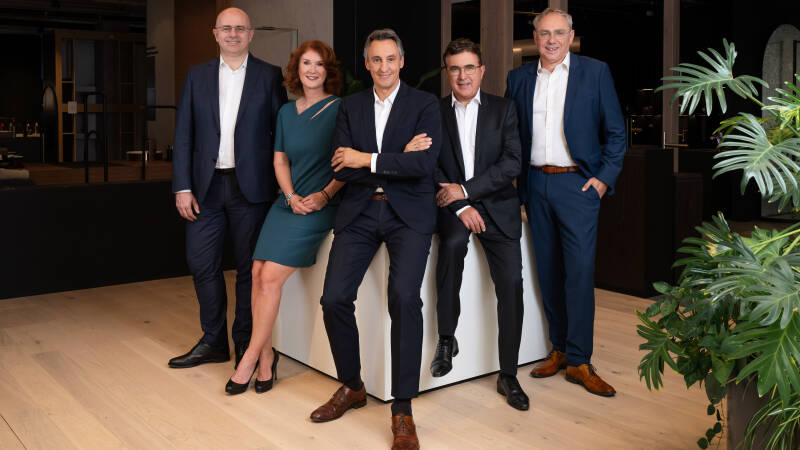The finiteness of natural resources on our planet requires new habits and drive. A large sphere of influence for each of us arises in our immediate environment:
Habitats of people extend to cities, villages, houses, apartments, the great outdoors. This is where we live, this is where we exert a great deal of influence on our environment. Decades of "higher, faster, further" in industrialized nations have led people to claim more and more space and resources for themselves. Buildings, for example, are among the biggest CO2 polluters. At 38 percent, they account for a considerable proportion of global emissions. This includes not only construction, but also operation, such as heating, hot water, electricity and air conditioning.
It is time to rethink (living) spaces as well.
Researched: Saving CO2e in the Bathroom
How your own four walls are faring in terms of climate compatibility and energy efficiency can well be illustrated using a single living space: the bathroom. In which phase do you think the most CO2e can be saved in the bathroom? During construction, during use or during disposal?
The correct answer is: in the utilization phase. This accounts for 90 percent of CO2e emissions.
This is the central result of a bathroom analysis by the Hansgrohe Group. We looked at the CO2e emissions that occur during the construction and disposal phases, as well as during a 20-year usage phase of a bathroom.
Tips for New Showering Habits
Where there are a lot of CO2e emissions, there is also a lot of potential for improvement. Our calculations from the analysis show what savings are possible in the bathroom. One calculation example relates to our showering habits:
A household with four people can reduce its personal carbon footprint by a total of 30 percent over a 20-year usage phase (creation and disposal included) by adjusting its showering routine.
This is possible if four people use a water-saving shower system and, at the same time
- lower the shower temperature from 40 degrees Celsius to 35 degrees (five percent),
- reduce the shower duration from four to two minutes (16 percent),
- and shower only every third day instead of every second day (15 percent).
All in all, our analysis shows that there are three ways to positively influence CO2e emissions in the bathroom:
- Those who shower less frequently, for shorter periods and cooler, and use water-saving shower heads, protect the environment. And, in times of high energy prices, also their wallets.
- For their part, manufacturers can use technical innovations to reduce the flow of water in shower heads and offer energy-saving faucet models – as Hansgrohe does, among other things, with its CoolStart technology.
- Using alternative energies for water heating.










